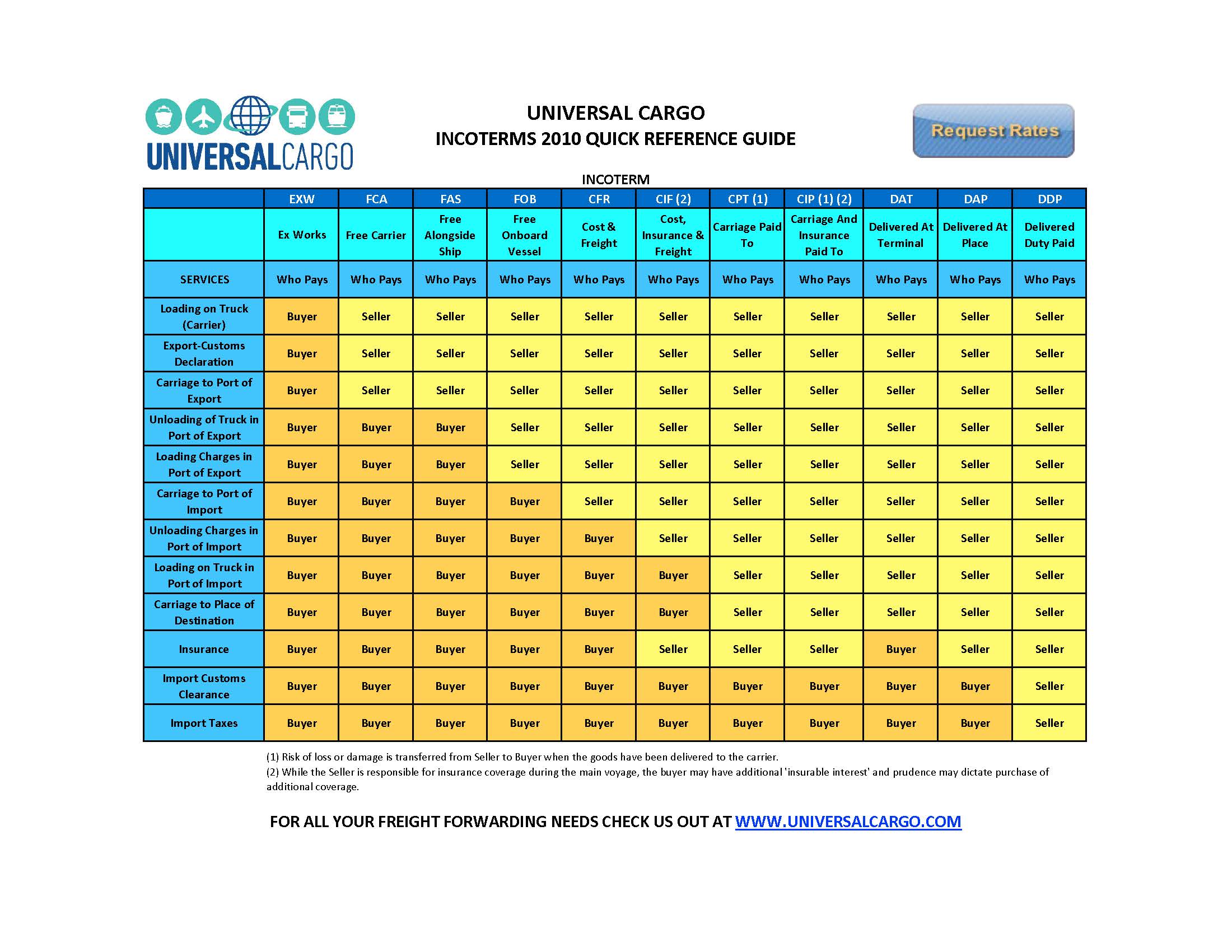What’s the Deal With Incoterms?!
Explanation of Incoterms: You can PWN these tricky little tigers…
Jargon: a) confused unintelligible language b)the technical terminology or characteristic idiom of a special activity or group.[1]
Ah jargon, what separates the newbies from the pwners. And unfortunately in the international shipping business there is a LOT of jargon. But not to fear – Universal Cargo Management is in the know and happy to share the wealth.
 Let’s get started: Incoterms, those oh-so-prevalent but somehow still-mysterious International Commercial terms.
Let’s get started: Incoterms, those oh-so-prevalent but somehow still-mysterious International Commercial terms.
Maybe it’s because they change over time (like international shipping), maybe it’s because there were more than a dozen (though not anymore!), or maybe it’s because they could stand for several things and are not particularly intuitive. Whichever is the case, Incoterms need explanation, and this blog is here to help.
But first, a little history. Published by the International Chamber of Commerce (ICC) for the first time in 1936, Incoterms were meant to standardize the phrases used by those who wanted their goods shipped (the shipper) and those who moved stuff overseas for a living (the carrier). [2]
Because of the diversity of the players in international shipping and the variety of terms used, it became clear that having an agreed upon set of terms would simplify the transactions and arrangements going on at international ports world-wide.
Since the original publication, the ICC has revised the Incoterms 6 times. The latest version was drafted in 2010 and has undergone significant changes already. Several terms were eliminated and different ones supplemented. More on that later – I promise.
The purpose of Incoterms is summed up thus: “to alleviate or reduce confusion over interpretations of shipping terms, by outlining exactly who is obligated to take control of and/or insure goods at a particular point in the shipping process.”[3]
The key here is the insurance question – defining precisely when the goods to be shipped change hands (either upon loading or upon unloading) and thus who is responsible for insuring them at each stage of the process – usually either the shipper or the consignee. Who assumes the risk and when is at the heart of the terms.
The terms divide into 4 different groups and each group’s letter makes up the first letter of Incoterm:
- Departure (E)
- Main Carriage Unpaid (F)
- Main Carriage Paid (C)
- Arrival (D)
While previously there were a total of 13 Incoterms, in a recent attempt at simplification by the ICC there are now only 11 terms. Some are specific to different modes of transportation. FOB (Free On Board) and CIF (Cost, Insurance, and Freight) for example apply only to sea freight. FCA (Free Carrier) would indicate a shipment delivery by air, rail, or some other form of non-maritime transport.
As you may have noticed, a simple expansion of the various acronyms is often not enough to make you go “Oh! Now I get it.” So this will be a short series of blogs laying out the precise meaning of each term.
 UCM has already provided you with a handy incoterms reference chart which will give you an overview of the responsibilities and a complete list of the Incoterms. This will prove handy once you know what the terms actually mean.
UCM has already provided you with a handy incoterms reference chart which will give you an overview of the responsibilities and a complete list of the Incoterms. This will prove handy once you know what the terms actually mean.
Also, we have provided a concise logistics glossary extremely useful for those interested in international shipping.
CLICK ON THE FOLLOWING LINKS TO SEE ALL INCOTERMS EXPANDED AND EXPLAINED:
Incoterms Definitions Part 1: EXW, FCA, FAS, FOB
Incoterms Definitions Part 2: CFR, CIF, CPT, CIP
Incoterms Definitions Part 3: DAT, DAP, DDP
—
![]()
Source: Incoterms

